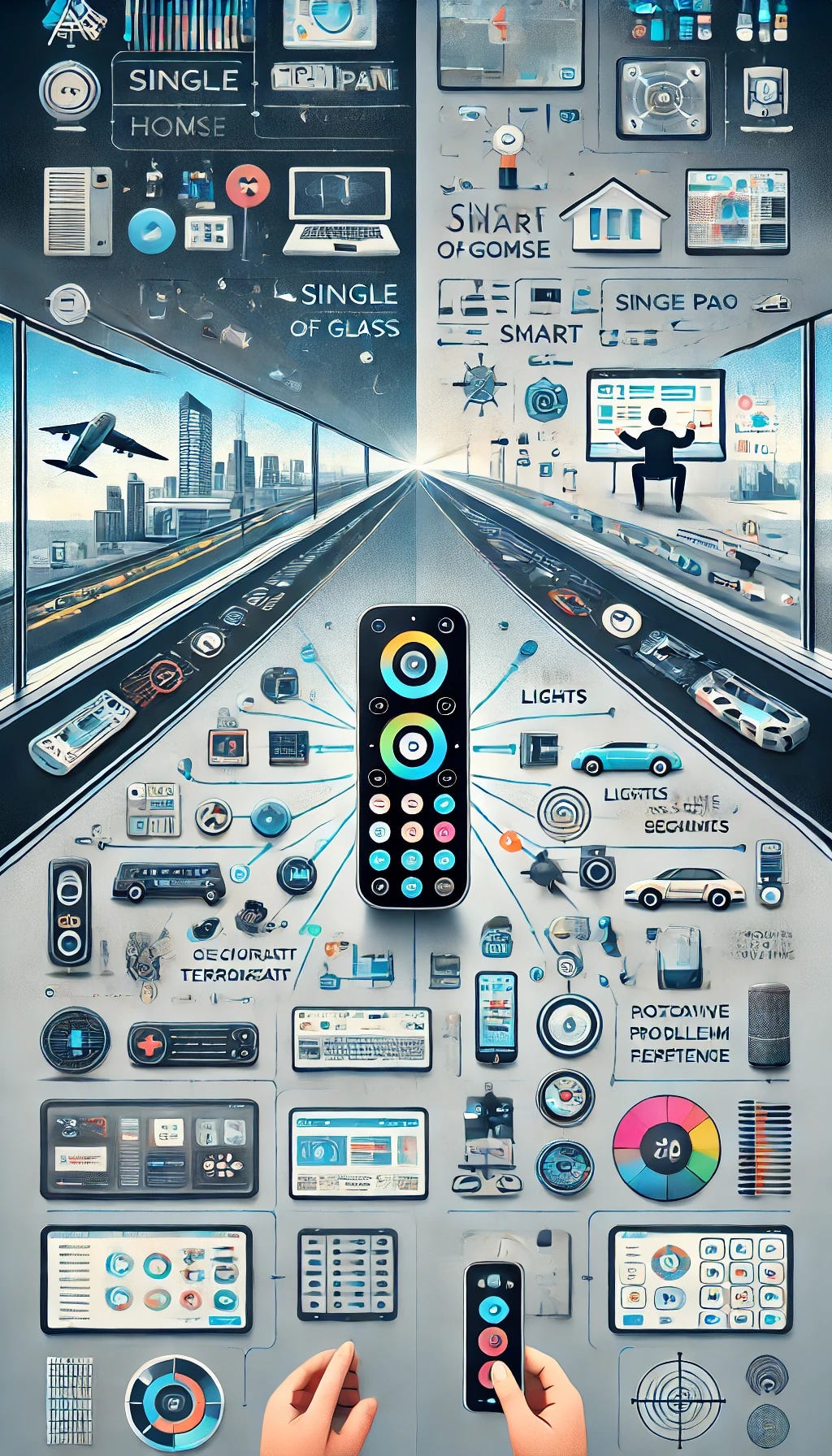Let’s talk about the ever-elusive single pane of glass with an analogy
Is this thing on?
.
Let’s see how the home smart home universal remote analogy works.
The single pane of glass (SPOG) concept in enterprise software is a holy grail of the business world. Trying to communicate these concepts to a broad audience is often a challenge. I find this analogy resonates with business leaders by illustrating the value of centralization, simplicity, and efficiency in managing complex systems. It also suggests that a custom remote is better suited for specific devices in a smart home.
Here's why this analogy works and how it can be used effectively in sales:
Behold the Universal Remote Control for a Smart Home as your Single Pane of Glass for all devices.
How the Analogy Fits:
Centralized Control: Just as a universal remote consolidate control over various smart home devices (lights, thermostat, security cameras, etc.) into one interface, a SPOG solution integrates disparate IT tools and data sources into a single dashboard.
Ease of Use: A universal remote simplifies user interactions by reducing the need to switch between multiple apps or remotes. Similarly, SPOG eliminates the inefficiency of toggling between different software tools.
Customizable Experience: Users can program a universal remote to prioritize frequently used functions, much like SPOG dashboards can be customized to display the most relevant data for specific teams or roles.
Time Savings: Both reduce time spent managing individual systems, allowing users to focus on higher-value tasks.
Proactive Problem Solving: A universal remote can alert users when devices are offline or malfunctioning, just as SPOG provides real-time insights into system health and performance.
Selling Single Pane of Glass Using This Analogy
Key Selling Points for Business Leaders:
Simplified Operations: Emphasize how SPOG reduces complexity by centralizing control over IT environments, much like a universal remote simplifies managing a smart home.
Increased Efficiency: Highlight time savings and productivity gains from having all critical tools and data in one place.
Enhanced Decision-Making: Draw parallels to how a universal remote provides a clear overview of the entire home system, enabling quick adjustments—just as SPOG offers holistic visibility into IT systems for informed decisions.
Cost-Effectiveness: Explain how consolidating tools into one platform reduces operational overhead, similar to replacing multiple device-specific remotes with one universal solution.
Scalability and Integration: Showcase how SPOG integrates with existing tools and scales with organizational growth, akin to adding new smart devices seamlessly to a universal remote.
Not all my analogies work. And sometimes you can’t assume that your references work in all cases with all people. Here are some Alternative Analogies to work with.
Pilot’s Cockpit Dashboard: Centralizes all critical flight controls and data into one interface, ideal for technical audiences who value precision and control.
Smartphone as a Travel Companion: Consolidates maps, tickets, photos, and communication tools into one device—great for emphasizing simplicity and multi-functionality.
Orchestra Conductor: Coordinates diverse instruments (tools) into a harmonious (IT environment), appealing to leaders focused on collaboration.
But I am still fond of the universal remote-control analogy and how it effectively conveys the core value of single pane of glass solutions by emphasizing centralization, simplicity, and efficiency—concepts that resonate with business leaders managing complex operations. When selling SPOG software, tailoring this analogy or using alternatives like the pilot’s cockpit dashboard or smartphone companion ensures alignment with the audience's priorities. These analogies simplify technical concepts while highlighting tangible benefits such as improved decision-making, time savings, and operational efficiency.



